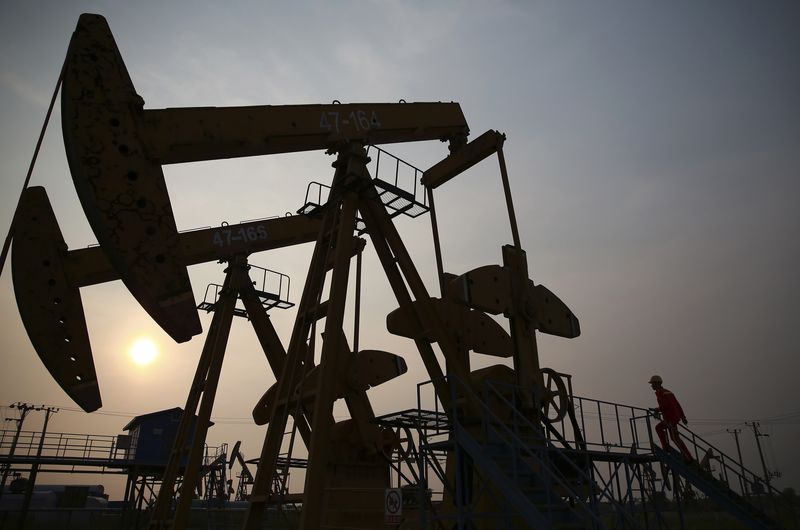* Oil futures set for longest losing streak since mid-2014
* Oil prices have shed more than 13 percent over past 6
sessions
* New supply to hit markets early 2016 as Iran boosts output
(Repeats to additional subscribers)
By Aaron Sheldrick and Dmitry Zhdannikov
LONDON, Dec 14 (Reuters) - Crude oil futures fell for a
seventh straight session on Monday, their longest losing streak
since mid-2014, on growing fears that the global oil glut would
worsen in the months to come in a pricing wars between key
producers.
Brent crude LCOc1 fell below $38 a barrel for the first
time since December 2008 on Friday and U.S. crude, West Texas
Intermediate (WTI) CLc1 , sank to around $35 for the first time
since February 2009.
Front month WTI was down 26 cents at $35.36 a barrel by 1047
GMT, while Brent was down 46 cents to $37.47 a barrel.
Both benchmarks have fallen every day since the Organization
of the Petroleum Exporting Countries on Dec. 4 abandoned its
output ceiling. In the past six sessions, they have shed more
than 13 percent each.
OPEC has been pumping near record levels since last year in
an attempt to drive higher-cost producers such as U.S. shale
firms out of the market.
New supply is likely to hit the market early next year as
OPEC member Iran ramps up production once sanctions are lifted
as expected following the July agreement on its disputed nuclear
programme.
"All new production will be earmarked for exports," BMI
Research said in a note. "In addition to volumes released from
storage, Iran will be able to increase crude oil and condensates
exports by a maximum of 700,000 b/d by end-2016," it said.
Iran's crude oil exports are set to hit a six-month high in
December as buyers ramp up purchases in expectation that
sanctions against the country will be lifted early next year.
Tehran is on track to ship 1.26 million barrels a day (bpd)
of crude this month, according to an industry source with
knowledge of tanker loading schedules.
Iranian news agency Shana quoted on Monday manager director
of Iran's Central Oil Fields Company, Salbali Karimi, as saying
Iran's cost of production stood $1-$1.5 per barrel, in a clear
indication its output would remain competitive under any price
scenario.
Gulf producers and Russia have previously said they would
not cut output even if prices fell to $20 per barrel.
On Friday, the International Energy Agency (IEA) that the
global supply glut was likely to deepen next year and put more
pressure on prices. But it said it didn't believe the world
would run out of storage capacity EIA/
OPEC supply is likely to increase by 1 million bpd next
year, Morgan Stanley (N:MS) analysts said in a research note Monday.
"Almost the entirety of added supplies in 2016 will come
from Iran, Iraq and Saudi," it said.
